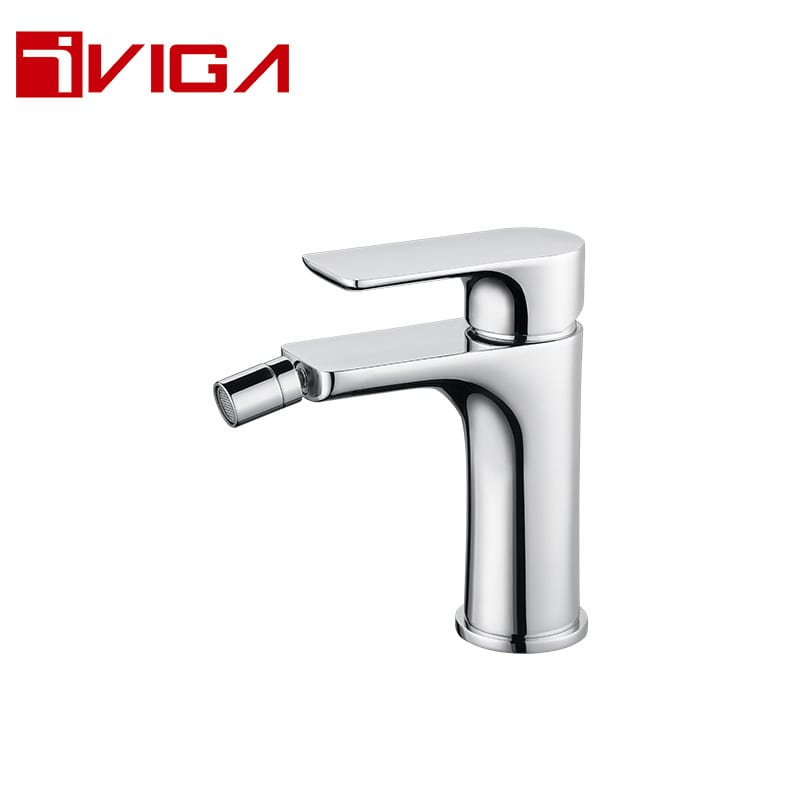Bidet faucet was invented by the French at the end of the 17th or early 18th century. In Old French, bidet originally meant “riding,” because the action when using a bidet is very similar to riding, and it started as a Water basins need to be watered by hand. The lavatory washer is fitted with a faucet nozzle like a wash basin. There are cold and hot water for selection and adjustment, and there are two direct-flow and down-jet water outlet methods, which are mainly used by people (men and women) to clean the lower body. The earliest wash basin was only a water basin. Around 1750, after the invention of the improved wash basin with water spray function, people’s hands began to be liberated. In Europe, such a bathroom was still installed next to a toilet in a normal family bathroom. The smart toilet is actually a combination of an ordinary toilet and a bidet faucet(in fact, a bidet is more suitable). Its bidet function was differentiated into anal flushing and bidet washing in the 1980s, and it has been used until now.
The bidet was invented by the French, and because French culture is highly respected by other European countries, it can be popularized in most parts of Europe, and its influence also extends to the Middle East, South America and Japan.
Leha ho le joalo, there are very few people in the United States about the bidet. The reason was that the British colonists looked down on the French aristocracy at that time, so they did not consider bringing this French court product to the United States when they emigrated to the United States. The original intention of the invention was to allow women to clean their genitals after sexual intercourse or during menstruation, and the American soldier had witnessed this product in French brothels during World War II, so it had a dirty and immoral impression, so it was not brought To the United States.
Advantages of the bidet:
1.Environmental protection:
If you have a regular toilet in your bathroom, you will need toilet paper afterwards. And because the toilet, especially the siphonic toilet, the drainage pipe is generally designed to be relatively narrow, it will be more likely to cause blockage than the flush toilet. If washing with a bath washer, matsapa a ho phumula ka pampiri ya ntloana a bolokeha, le palo e kholo ea pampiri ea ntloana e ka bolokoa, kahoo e baballa tikoloho.
2.Bophelo bo botle:
Sepompo sa bidet se sebelisetsoa ho hloekisa karolo ea lekunutu ka metsi, e ka qoba boemo ba hore e ke ke ea hlakoloa ka mokhoa o hloekileng ha ho sebelisoa pampiri ea ntloana, e ka fokotsang bothata ba mafu a bosa kapa mafu a mang. Lingaka tse ling tsa rectum le tsona li khothalelitse tšebeliso ea bidet, mokhoa o matla oa ho hloekisa ka metsi a futhumetseng ka mor'a ntloana, e thusa ho thibela le ho phekola mafu a 'mele joalo ka li-hemorrhoids.
3.E loketse maqheku:
Bakeng sa maqheku, ho ka ba thata ho hlakola libono ka pampiri ea ntloana. Haeba u sebelisa bidet, u ka lula holim'a eona ka kotloloho ho hloekisa sebaka sa hau sa lekunutu, avoiding a series of troublesome steps with toilet paper. If a smart toilet is used, there may be too many keys on the control panel, which may cause the elderly to operate incorrectly, while the washer does not need to be operated too much and can be used conveniently and directly.
Bidet purchase tips:
- Observe the surface of the sanitary ware. Be sure to observe it closely under a strong light source to see the gloss of the surface, whether there are small black spots on the surface, the size of pinholes on the ceramic surface, and the smoothness of the surface.
- Use water droplets to check the surface drainage capacity of the sanitary ware. Take a small amount of water with your hands and spot the water on the surface of the sanitary ware. Haeba marotholi a metsi a phalla 'me a thella joalo ka lekhasi la lotus, bokaholimo ba thepa ea bohloeki bo boreleli haholo. Supa bokaholimo ba thepa ea bohloeki, 'me metsi a namela holim'a thepa ea bohloeki 'me a hasana ho ba sengoathoana, e bontshang hore bokahodimo ba thepa ya bohloeki ha bo boreledi bo lekaneng.
- Boiphihlelo ba ho sebelisa nozzle e nyane ea faucet ea bidet: O ka bona lebelo la ho fafatsa le matla a molomo o monyenyane oa sefafatsa sebakeng sa ketsahalo.
Mehato ya tlhokomelo :
Tokisetso ea ho kenya: Pele o kenya faucet, hloekisa metsi a litšila, masalla, lehlabathe, le litšila tse ka har'a phala ea metsi pele u kenya faucet ho thibela ho thibela bubble kapa tšenyo ea mantlha ea valve.
Ho hloekisa bokahodimo: 1. Kamehla sebelisa sesepa ho hohla le ho tlosa tšilafalo. Pele o hlatsoa, hlatsoa bokaholimo ba pompo ka metsi ebe u o omisa ka lesela le bonolo la k'hothone, ebe o e hlakola ka bonolo ka sesepa se sa nke lehlakore ho boloka bokaholimo ba eona bo hloekile. 2. U se ke ua sebelisa lisebelisoa leha e le life tse hloekisang, masela a thata, lithaole tsa pampiri kapa libolo tsa tšepe, le leha e le efe acidic, lihloekisi tse mahoashe kapa sesepa ho phumula bokahodimo ba pompo.
Tlhoekiso ea sefe: Tlosa hlooho ea bubble, tlosa sefe, 'me u sebelise borashe ba meno kapa borashe bo bonyenyane ba moriri tlas'a faucet ho hohla sefe.

 iVIGA Tap Factory Supplier
iVIGA Tap Factory Supplier
